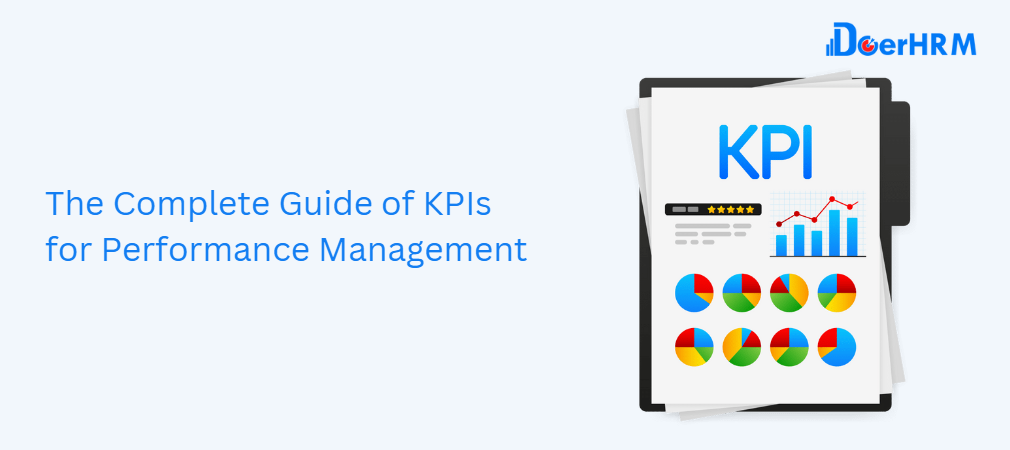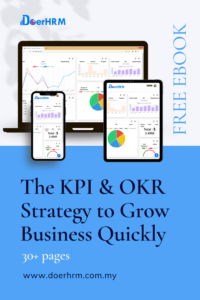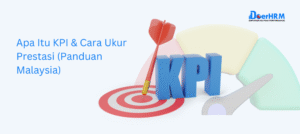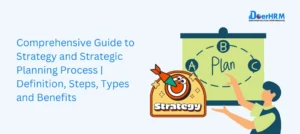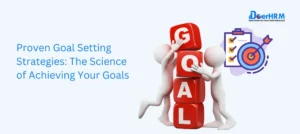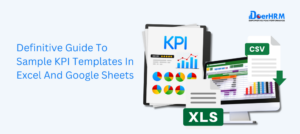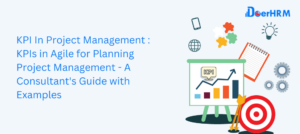We discuss a lot about the change from transactional to strategic HR here at DoerHRM. In the past, HR was seen as a separate department that only did things like hire and onboard new employees, manage benefits and payroll, and deal with legal or compliance issues. However, it’s no longer possible to deny that HR can and should play a key role in making the business successful.
But HR leaders need to be more data-driven if they want to really take their place at the top table. By collecting and analysing HR analytics, people leaders can make better decisions about talent, improve work processes, and make the employee experience better overall. It also gives HR leaders the power to have a say in important business decisions made at the top of the organisation.
Sounds easy enough, doesn’t it? Not quite. One thing is to know that you need to be data-driven. Another is to know what to measure and what to do with the data you find.
In this guide, we’ll show you the most important areas to gather data and the most important metrics to think about when building an HR analytics function. We have put these metrics into the categories that are most important for reaching strategic people goals.
Hiring & Retention
- Headcount growth: This key performance indicator (KPI) measures how the number of employees at an organisation has grown over time. When the number of employees goes up, it means that the business is doing well.
- Time to hire: This metric counts the number of days between when a candidate applies for a job and when they accept a job offer. Knowing the average time to hire can give you information about how well you recruit and how the candidates feel about the process. It can also help you figure out if there are any bottlenecks that are slowing down the process. Note: You might want to break up the time it takes to hire for individual contributor (IC) and front-line management roles, as well as Director and higher roles. Filling Director and above roles usually takes a lot longer than filling IC and front-line management roles, so it is helpful to look at this metric for each group separately.
- Quality of hire: This metric measures how much value a new hire brings to the company and how well they do their job. There is no easy way to measure the quality of a hire, but one good way is to set goals for the hire to meet by a certain time (30, 60, or 90 days, for example) and then figure out what percentage of those goals have been met after that time period.
- Retention rate: The retention rate is the percentage of employees who stay with the company. It shows a lot about whether or not employees feel like they are valued and have room to grow within the company. Note: When measuring retention, pay close attention to how long top performers stay with the company.mThese are the employees who always meet or go above and beyond their goals and add a lot to the organisation. Keeping these employees is a big part of an organization’s success because losing them would hurt their teams and the organisation as a whole.
- Turnover: The opposite of retention is turnover, which is the number of employees who leave the company. When measuring turnover, it is important to tell the difference between regrettable and non-regrettable turnover because they have different effects.
• Regrettable turnover is the number of employees who decided to leave the organisation on their own and whose departure hurts the rest of the organisation.
• Nonregrettable turnover is the number of employees whose jobs were ended by the company for reasons that had nothing to do with their performance or behaviour. - Average tenure: This KPI measures how long an employee stays with an organisation on average.
A longer average length of employment is a good thing because it shows that employees like working for the company enough to stay. A noticeable drop in the average length of employment is cause for concern. - Time to do activities: This shows how many days it takes for a new employee to be fully operational and productive in their jobs after they start. To find the average, add up all the amounts for new hires in a certain time frame and divide by the number of new hires in that time frame. Time to productivity that goes down is a good sign because it means that the onboarding process is getting better.
- Internal promotion rate: Higher internal promotion rates are good because they show that the best employees are staying with the company and getting better. When your employees choose to stay and move up the ranks instead of switching jobs or looking for a better job elsewhere, it’s a good sign that your company is investing in their growth and development in the right way.
Employee Engagement
- Employee engagement score: Usually, surveys of employee engagement are used to figure out this metric. There are many different ways to look at engagement scores and figure out what they mean.
• Scores for engagement by team; • Scores for engagement by manager; • Scores for engagement by level; • Scores for engagement that go up or down - Requirements of employment agreement statements: This shows how often employee engagement surveys are done in the organisation. If this number stays the same or goes up, it means that the organisation as a whole continues to spend time getting feedback from employees so that the employee experience can always get better.
- Percentage of vacation days/sick days used: When you look at this metric, you can get an idea of how well the organisation balances work and life on average. If the percentage is low or has gone down, it could mean that employees don’t feel comfortable taking time off or that they have too much work to be able to take time off.
- Employee Network Performance Score (ENPS): The Net Promoter Score (NPS) is a customer experience metric that is often used to measure how loyal a customer is to a brand or company. It can be anywhere between -100 and 100, and a higher score is better. “How likely are you to recommend (product or service) to a friend or colleague?” is used to figure out the score. Based on how people answer, they are put into groups:
Those who answered with a 9 or 10 are promoters. Those who answered with a 7 or 8 are passives.
• People who said anything from 0 to 6 are detractors. These are customers who probably won’t buy from you again and might even stop other people from buying from you or working with you.
To figure out the NPS, take the percentage of detractors and subtract it from the percentage of promoters. HR teams can also use this metric in something called the Employee Net Promoter Score (eNPS).
The eNPS asks employees if they would recommend the company as a place to work, which can give a good idea of how happy most employees are in general. For the eNPS, a score over 0 is considered acceptable, a score over 50 is considered excellent, and a score over 70 is considered best-in-class.
Performance Management
- Goal attainment rate: This metric measures how many goals are reached compared to how many are not. Goals are supposed to push and challenge employees, and it takes skill to set goals that do that.
If the rate of meeting goals is too high, employees may quit because they are bored. On the other hand, if the goal-attainment rate is consistently low, employees may feel like they can’t meet expectations, which could make them more likely to quit. Note: If you can, try to keep track of how well goals are met. There’s a big difference between someone who gets 90% of the way to a goal and someone who only gets 20%. - Demonstration of values: This metric looks at how employees do their jobs and sees if they are living up to the company’s values. Most of the time, a question on a performance review is used to measure it.
- Demonstration of competencies: This can also be measured with a question on an employee’s performance review: How well does the employee show they have the skills needed for their job?
- Performance reviews participation rate: This shows how many employees have taken part in the performance review cycle. The closer this number is to 100%, the better.
- Reduction in performance review cycle completion time: This measures how much time is saved when a performance review cycle is finished. As an organisation gets better at doing reviews, the time it takes to finish a cycle should go down over time.
- Satisfaction with performance reviews: Running a performance review cycle is not enough; you also need to make sure that employees are getting something out of it. Measuring how happy people are with performance reviews over time is a good way to make sure that the review process is always getting better and better at giving valuable feedback that leads to positive change. You can find out how this is going by giving employees a survey after a review process is done.
When thinking about this metric, pay close attention to the differences in how satisfied different types of employees are, especially managers and their direct reports. In our Reviewing the Performance Review report, we found that 75% of managers agree that they are good at leading performance reviews, but only 53% of individual contributors agreed that their manager is good at leading performance reviews. Also, 68% of managers said that the review process made their relationships with their direct reports better, but only 43% of individual contributors agreed. Take note of how the review process works at all levels of the organisation so that you can take the steps needed to make it better for everyone. - Performance management ratio: This KPI looks at how many employees have performance issues or are on plans to improve their work. If this number goes down over time, it means that you are hiring the right people or that your investments in employee training and development are paying off.
- Revenue per employee: This metric shows you how well your team is working as a whole. It also helps you stop thinking of employees as just a cost and instead see the real value they bring to the organisation.
Manager Effectiveness
All of the metrics that have been discussed about so far can be looked at in detail for each manager. For instance, you can see how engaged each team is, how many vacation days each team took, how many goals each team reached, etc.
Doing this will give you a good idea of a manager’s level of success and whether it is getting better or worse over time. Here are some more specific ways to measure how well a manager is doing his or her job.
- Team goal completion: This shows how well a manager guided and coached the team to reach its goals. A low completion rate can mean that team members aren’t doing as well as they should, but a steady low completion rate can also mean that the manager is setting unrealistic goals or expectations.
- Check-in completion rates: This shows how many employees check in on a given day. A higher number is better because it shows that the team manager is doing a good job of getting the message across that check-ins are important so that employees can always get support and feedback.
- 1-on-1 frequency: This shows how often managers have one-on-one meetings with their direct reports. Note that this is different from the check-in completion rates, because tactical check-ins and one-on-one meetings should be different. One-on-one meetings give managers and their reports a chance to talk about work goals and also about how to grow and improve. One-on-one meetings between managers and their direct reports should happen regularly, so a drop in this number is cause for concern.
- Feedback quality: This shows how well your managers are able to give feedback to their workers. One way to measure it is to send out a survey or nudge after a review cycle and ask employees if the feedback they got was helpful or not, or to ask them to rate it from 1 to 10. This number should go up as you spend more time teaching employees, especially managers, how to give good feedback.
Diversity, Equity, Inclusion, and Belonging
Getting good at Diversity, Equity, Inclusion, and Belonging (DEIB) isn’t just about hiring people from different backgrounds. It means making sure that formal and informal programmes, policies, and processes support equity, inclusion, and a sense of belonging in every part of an employee’s life.
So, all of the above metrics can be looked at through the DEIB lens. Also, diversity, fairness, being included, and feeling like you belong are all different things that should be measured in different ways. Here is a quick summary:
- Diversity: Diversity is made up of the many things that make people unique and different from each other. It can be measured by collecting and analysing demographic information at all levels of the organisation, then figuring out where there are gaps or places where people aren’t represented enough.
- Equity + Inclusion: Equity and inclusion is about being fair to other people. It’s not the same as treating everyone the same, which is what equality means. Inclusion is a set of actions that recognise, respect, and welcome differences. Equity and inclusion can be measured by looking at how different groups of people are represented from before an employee is hired until they retire. Analyzing E&I also involves a careful look at benefits plans, employee handbooks, processes for making reasonable accommodations, and other HR policies to make sure that all employees are treated in a fair and inclusive way. This information may include ties. This data may show how talent acquisition, performance management, learning management, the human resource information system (HRIS), and other systems work together.
- Belonging: Belonging is a state of mind and emotion in which you feel seen, valued, and supported for being yourself. Belonging is a qualitative concept that can be measured with sentiment surveys and other tools that try to capture how employees feel at a given time.
Conclusion
It’s great to have an action plan that is based on data, but what good is it if the rest of the leadership team doesn’t agree with it? Attaching HR analytics to business goals is the best way to get the rest of the executive team on board with your data-driven, strategic HR projects.
By measuring the right things, you can find threats to the organisation and ways to improve employee performance, engagement, and productivity. All of these things are directly related to business performance, customer satisfaction, sales, and other KPIs.
If you can show that the data-driven strategy you want to implement will have an effect on these metrics and help the organization’s vision, mission, and values come to life, other executives will listen.
Still, it is your job to make these connections clear and, whenever possible, back them up with data. Lean on your technology partners, like your HRIS or performance management tools, to learn how to use data and dashboards to make business cases for investments you want to make.
